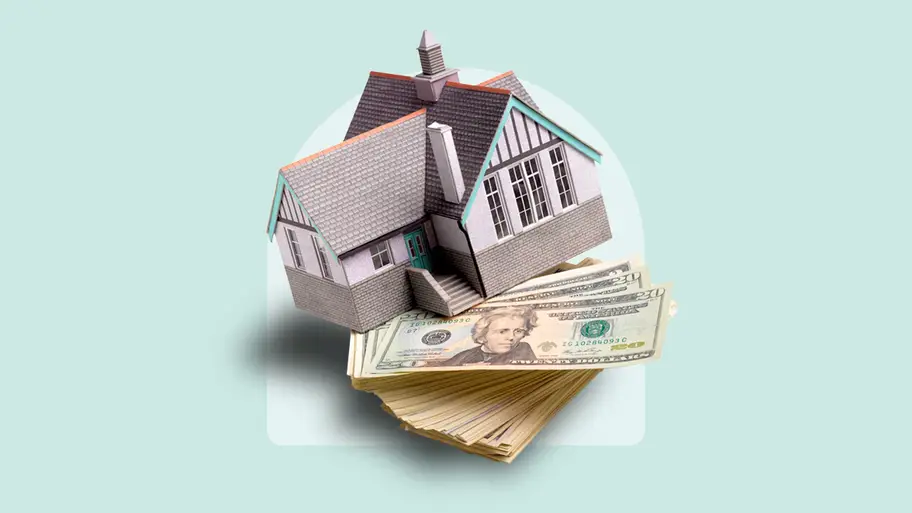Enter your details
Answer some questions about your home equity needs to help us find the right lenders for you.
 Written by
Written by
Answer some questions about your home equity needs to help us find the right lenders for you.
See competitive home equity rates from lenders that match your criteria and compare your offers side by side.
After selecting your top options, connect with lenders online or by phone. Next, choose a lender, finalize your details and lock your rate in.
| LOAN TYPE | AVERAGE RATE | AVERAGE RATE RANGE |
|---|---|---|
| HELOC | 8.13% | 4.99% - 12.50% |
A big decline for HELOC rates in the latest week, with the average $30,000 line of credit dropping 13 basis points 8.13 percent, according to Bankrate’s national survey of lenders.
Home equity lines of credit (HELOCs) have variable interest rates that fluctuate based on the prime rate, which in turn is tied to changes in Federal Reserve monetary policy. While there was dissension among the Fed Governors, the central bank voted to leave interest rates unchanged, as it weighs inflation risks and the impact of President Trump’s tariffs on the economy.
If you’re looking to finance a renovation and have equity to tap, a line of credit could be less expensive than a home improvement loan. It’d also save you from a cash-out refinance, which could mean giving up a low rate on your mortgage in exchange for a new one.
"A HELOC offers more flexibility over when and how much you withdraw,” says Stephen Kates, financial analyst at Bankrate. “Borrowers who anticipate changing borrowing needs over time, or who want open-ended access to their home’s equity, might find greater value in a HELOC. Its flexible draw period and variable interest rate can be advantages for borrowers who are expecting interest rates to decline and feel comfortable managing changing loan terms."
| LOAN TYPE | CREDIT LINE AMOUNT | TERM PERIOD | CURRENT APR |
|---|---|---|---|
| Up to $1 million | 10-year draw, 20-year repay | 6.49% (for 12 months) | |
| $25,000–$400,000 | Up to 30 years | 6.60% | |
| $10,000–$300,000 | 10-year draw, 30-year total repay period | 6.99% | |
| Starting at $25,000 | 10-year draw, 20-year repay | 7.34% | |
| $25,000-$150,000 | 10-year draw/ 20-year repay for variable-rate HELOC; 5–20-year repay for fixed-rate HELOC | 7.67% (fixed) / 7.88% (variable) | |
| $15,000–$1 million | 10-year draw, 20-year repay | 8.05% (6.49% - 6-month intro rate) | |
| Starting at $5,000 | 15-year draw, 15-year repay | 8.17% standard HELOC / 8.67% interest-only HELOC | |
| $10,000–$500,000 | 30 years | 8.25% |
Note: The above APRs are current as of July 9, 2025. The exact APR you might qualify for depends on your credit score and other factors, such as whether you're an existing customer or enroll in auto-payments.
Both your personal financial profile and economic/financing trends play a role in the HELOC rate you will ultimately receive. Factors include:
If you’re interested in a HELOC, it pays to do your homework and to shop around. Rates and terms can vary more than you’d think, and a little prep can go a long way.
HELOCs combine relatively low interest rates with the flexibility to borrow what you need when you need it. If you need money over an unpredictable period of time, a line of credit is ideal. However, there are always risks when you take out a loan, especially one that's secured by your home. Here are some of the pros and cons of a HELOC.
Lets you tap home equity without disturbing the primary mortgage (nice if you’ve locked in a low rate).
Typically lower upfront costs than home equity loans.
Lower interest rates than with credit cards.
Usually low or no closing costs.
Interest charged only on the amount of money you use.
Lenders may require minimum draws.
Interest rates can adjust upward or downward.
Lenders may charge a variety of fees, including annual fees, application fees, cancellation fees or early closure fees.
Late or missed payments can damage your credit and put your home at risk.
A HELOC is not the right choice for every borrower. Depending on what you need the money for, one of these alternative options may be a better fit:
Before you start applying for a HELOC, here are some home equity resources to prepare you for the process:

What is home equity?
Discover what home equity means and how you can tap it to pay for home renovations or pay off debts, and how to get the best rates.

How to calculate your home equity
Follow these steps to calculate how much equity you have in your home and how to tap into it via a home equity loan or line of credit (HELOC).

HELOC and home equity loan requirements
Everything you need to know about HELOC and home equity loan requirements: credit scores, DTI ratios and more.

How to shop for a HELOC: 10 ways to get the best HELOC rate
Tips that'll help you save money in the long-term by scoring the best possible rate on your home equity line of credit (HELOC).
Written by: Linda Bell, Senior Writer, Home Lending
For more than two decades, I have covered the housing market, including in depth coverage of the 2008 housing market collapse. To increase my knowledge of home equity and HELOCs, I earned a Certified HELOC Specialist designation from the National Association of Mortgage Underwriters (NAMU). Throughout my career, I have won more than two dozen awards, most notably from the National Association of Real Estate Editors (NAREE) and the New York Association of Black Journalists (NYABJ) for an investigative series I produced on minorities and the housing industry.
Edited by: Troy Segal, Senior Editor, Home Lending
As a senior editor on Bankrate’s Home Lending team, I handle coverage of residential real estate, specializing in the finer points of homeownership, home equity and home-based financing. I hold a Certified Mortgage Underwriter designation from the National Association of Mortgage Underwriters. Throughout my career, I’ve also written and edited articles on a variety of personal finance, investment and wealth management topics. I was named one of Fixr.com’s “30 Top Home Improvement Journalists” in 2024.
Reviewed by: Mark Hamrick, Senior Economic Analyst
I am an award-winning business and financial journalist, with decades of experience in the news business. I can often be found on television, radio and in print, where I make complex financial topics easy to understand. I have also helmed two major journalism organizations and am a champion for financial literacy and press freedom around the globe.